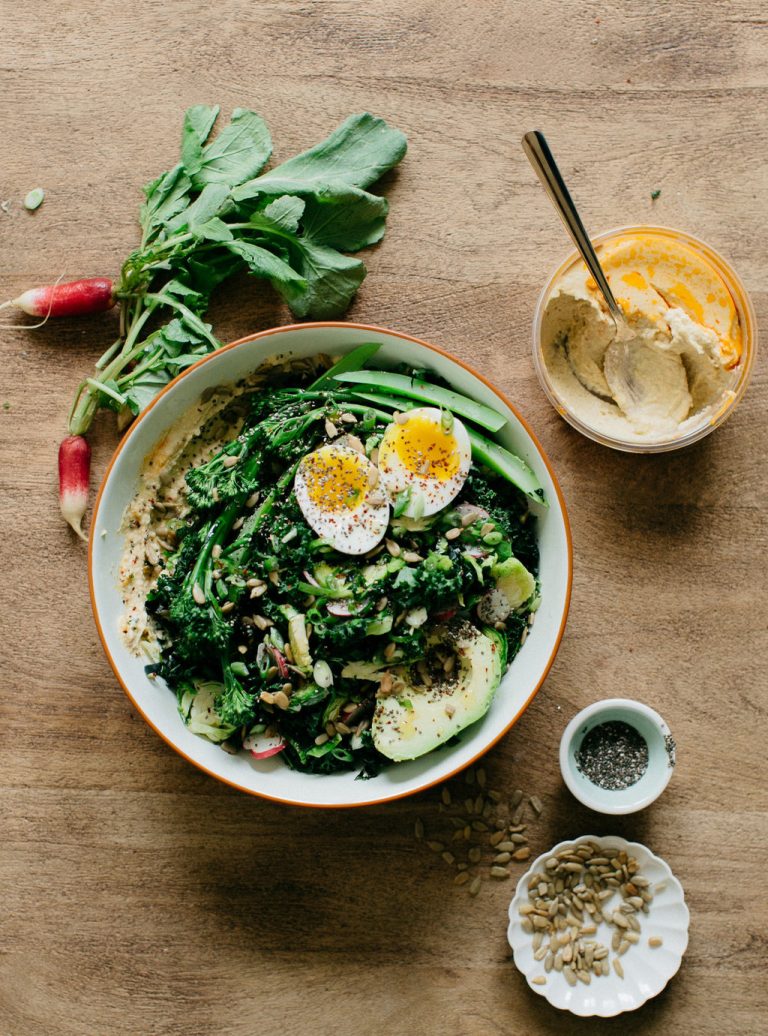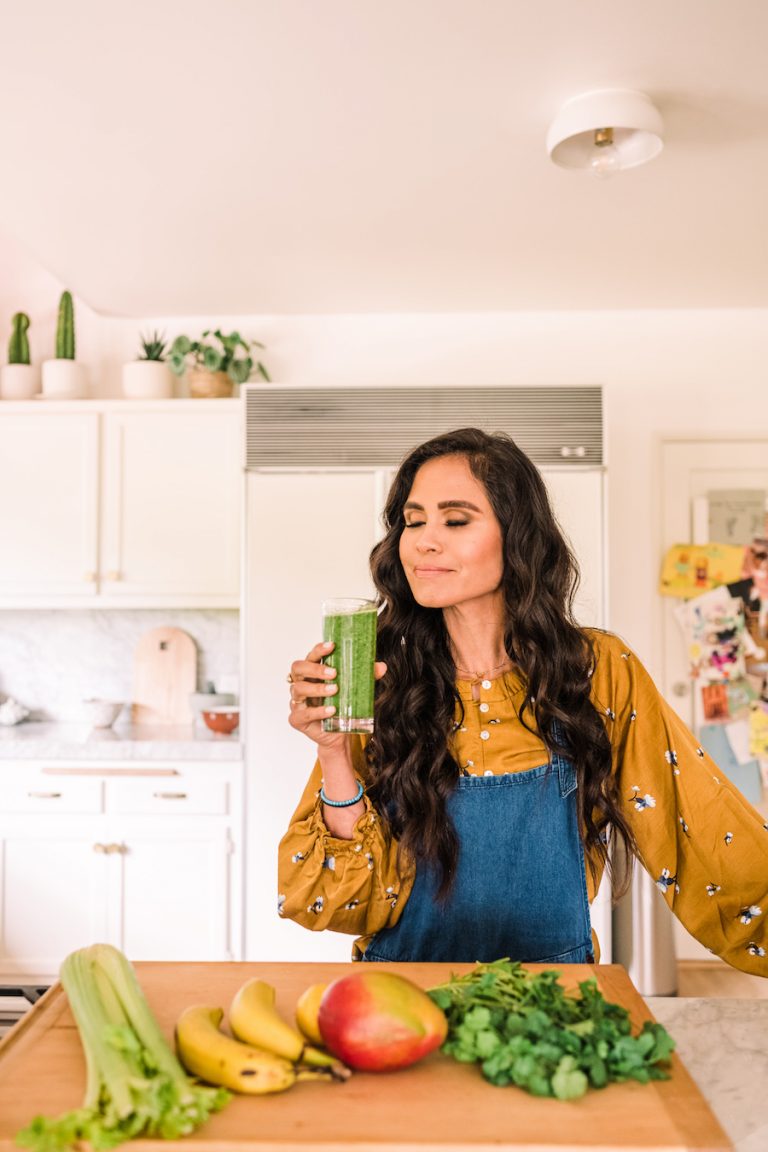Can You Naturally Increase Estrogen? A Nutritionist Shares Everything You Need to Know
Because hormones affect everything. The post Can You Naturally Increase Estrogen? A Nutritionist Shares Everything You Need to Know appeared first on Camille Styles.

This goes without saying, but hormone health is vital to our well-being. Throughout every stage of life, hormones play a role. They orchestrate our growth, sex drive, reproduction, metabolism, and more. Although very powerful, hormones are equally sensitive. Progesterone, testosterone, and estrogen are easily influenced by diet and lifestyle factors—not to mention, age. Speaking of age, although estrogen naturally decreases as we get older, not all is doom and gloom. Learn how to naturally increase estrogen with the following science-backed tips. Vaginal dryness, be gone!
Feature image by Riley Reed.
1 of 10

Subscribe
Get Breathing Space
A twice-monthly note from me to you. What's currently on my mind, in my cart, on my plate, and more. Drop your email to subscribe.
Thanks for Signing Up!
Oops!
Looks like you’re already signed up or your email address is invalid.
Oops!
Looks like you unsubscribed before click here to resubscribe.
What are the body’s primary hormones?
To set the stage, there are a few major hormones in the body. They all play a role in our development, fertility, sleep, energy, and more. Cortisol is our main stress hormone, T3 and T4 are our two primary thyroid hormones, melatonin controls our circadian rhythm, our sex hormones (progesterone, testosterone, and estrogen) are involved in reproduction, and insulin is required for the cells in your body to properly use sugar in your bloodstream. Although powerful, they are easily influenced. One—or a few—circumstance can throw hormones out of whack.
2 of 10
How common is hormonal imbalance?
Very. These days, hormone irregularities are remarkably common. In fact, studies show that upwards of 80% of women suffer from hormone imbalances. PCOS (polycystic ovary syndrome), for example, affects approximately 5 million women in the United States. Regardless of the specific condition, when you have a hormonal imbalance, you have too much—or too little—of a particular hormone. From high cortisol to low estrogen, hormonal imbalances are (unfortunately) becoming the norm. Luckily, you can take the health of your hormones into your own hands.
What is estrogen?
Commonly referred to as the female sex hormone, estrogen is one of the most essential chemicals in all bodies—men included. While estrogen plays many roles, it’s a predominant leader in the female reproductive system. Along with regulating the menstrual cycle, estrogen affects the urinary tract, heart and blood vessels, bones, breasts, skin, hair, the brain, and more. A woman’s body makes three different types of estrogen: estradiol (the most common type in women of childbearing age), estriol (the main estrogen involved in pregnancy), and estrone (the only estrogen your body makes after menopause).
3 of 10
Why We Need Estrogen
Beyond its importance for developing and maintaining the reproductive system, estrogen is necessary for childbearing and a healthy, regular menstrual cycle. We also need estrogen to maintain bone density, positive mood, and healthy cholesterol levels. Furthermore, estrogen contributes to cognitive function and overall vitality.
Estrogen Dominance: Signs and Symptoms
Before we dive into how to naturally increase estrogen, let’s cover the other end of the spectrum. When the levels of estrogen are chronically high (especially in comparison to other sex hormones circulating in the blood), women are commonly diagnosed with estrogen dominance. Unfortunately, without proper balance with other sex hormones, estrogen dominance can lead to an array of unpleasant symptoms:
Hair loss Low sex drive Poor sleep quality Cold hands and feet Digestive issues Tender or swollen breasts Fatigue Depression Non-cancerous breast lumps 4 of 10
What health issues are caused by high estrogen?
High levels of estrogen can lead to PCOS, uterine fibroids, irregular menstrual cycles, and thyroid dysfunction. Additionally, elevated estrogen is a risk factor for breast, ovarian and endometrial cancer in women, as well as prostate and breast cancer in men. However, there is good news! A variety of lifestyle changes can lower estrogen levels, naturally. Beyond removing endocrine disruptors from your home, incorporating meditation and finding joyful ways to move your body are key. Furthermore, eating a low-estrogen diet is a practical, sustainable way to help balance hormones.
5 of 10
Low Estrogen: Signs and Symptoms
Contrary to estrogen dominance, let’s chat about the other end of the spectrum: low estrogen. Although low estrogen is a normal part of aging, low levels at a younger age may be associated with atypical sexual development. If you experience hot flashes—or you’re older than 16 and haven’t gotten your period—chat your healthcare provider. This may be correlated with low estrogen. At any rate, below are common signs of low estrogen:
Dry skin Tender breasts Weak or brittle bones Moodiness and irritability Vaginal dryness Hot flashes and night sweats Irregular or absent periods Weight gain, particularly in the midsection Headaches before or during your period. Decreased sex driveAs mentioned, the most common cause of low estrogen is age. It’s natural for your estrogen levels to fall as you get older. However, low levels—unrelated to menopause—may be a sign of a condition. Testing sex hormones in a woman (with regular monthly cycles) is best done during the mid-luteal peak. This is about 1 week (5-7 days) after ovulation occurs. In a 28-day cycle, this would-be days 19, 20, 21 or 22.
At what age does estrogen begin to drop?
Typically, around age 51. With menopause, estrogen levels drop and you no longer ovulate. This decrease in estrogen may lead to symptoms like vaginal dryness, mood changes, night sweats, and hot flashes. The primary estrogen in your body changes from estradiol (E2) to estrone (E1) during menopause. At this stage in a woman’s life, knowing how to naturally increase estrogen is key.
6 of 10
How Diet Impacts Estrogen
Research shows that conventional animal products (particularly, dairy, chicken, and fish) contain high amounts of estrogen. These can lead to estrogen dominance. In essence, hormones have been used for decades to accelerate animal growth. Synthetic estrogen and testosterone are the most common, unfortunately. Whether you’re struggling with too much or too little estrogen, prioritizing organic food (as often as possible) is beneficial. Additionally, extremely processed foods, alcohol, and saturated fats can contribute to estrogen woes.
7 of 10
Eating for Hormone Balance
When it comes to eating for hormone balance—particularly if you have low estrogen—below are a few tips and tricks for supporting happy hormones.
If you’re regularly consuming conventionally-raised animals, consider making the switch. And rest assured, you can absolutely eat animal protein—without added hormones—on a budget. To start, look for labels like rBST free, organic, and pasture-raised. Otherwise, simply scale back on your animal consumption. Opt for more plant foods, as they are high in fiber and can help balance excess estrogen in the body. On a regular basis, build your snacks and meals around protein, fresh fruit, vegetables, nuts, seeds, and legumes. Healthy fats from plant foods are also important. Think almonds, avocados, Brazil nuts, chia seeds, coconut, sunflower seeds, tahini, and walnuts. Load up on plenty of leafy greens to help with the body’s natural detoxification pathways. A well-functioning liver is imperative for breaking down excess estrogen. Veggies like broccoli, kale, cabbage, collard greens, and bok choy all contain compounds that support estrogen receptors. And great news, greens are in season, year-round! Soybeans and soy products are a rich source of isoflavones, one of the most important groups of phytoestrogens. You can add soy to your diet with tofu, tempeh, soy milk, and edamame. When possible, opt for organic soy. Keep in mind that there is debate about the benefits of soy isoflavones. Many studies suggest that they can decrease the risk of heart disease and breast cancer, as well as reduce symptoms of menopause. However, much of the evidence is preliminary and performed on animals. 8 of 10
5 Vitamins and Minerals to Support Low Estrogen
Along with a diet rich in nutrients to support healthy estrogen levels, supplements may be helpful. Before changing your supplement routine, consult your healthcare provider.
B vitamins
B vitamins play an important role in the creation and activation of estrogen in the body. Low levels of these vitamins can lead to reduced levels of estrogen. In one study, researchers compared levels of certain B vitamins to breast cancer risk in premenopausal women. Results indicated that higher levels of vitamins B-2 and B-6 were associated with a lower risk of breast cancer, which may be due to the impact of these vitamins on estrogen metabolism.
Vitamin D
Did you know that vitamin D is actually a hormone and not a vitamin? This study explains that both vitamin D and estrogen work together to reduce the risk of cardiovascular disease and increase low levels of estrogen.
Boron
Boron is a trace mineral. It’s necessary for the metabolism of the sex hormones testosterone and estrogen. Researchers believe that boron influences estrogen receptors by allowing the body to more easily use the estrogen available.
DHEA
DHEA is a naturally occurring hormone that can be converted to estrogen and testosterone. Within the body, DHEA is first converted to androgens and then further converted to estrogens. Therefore, DHEA supplements can increase estrogen levels.
Magnesium
Magnesium is a powerful mineral in estrogen metabolism. It also can control the detoxification of estrogen. Because of this, magnesium can increase estrogen naturally when levels are low.
9 of 10
How Stress and Exercise Impact Estrogen
Beyond food and supplements, it’s important to keep stress at bay and find consistent ways to move your body. In terms of stress, high levels of cortisol can either increase or decrease estrogen—it depends on the source of stress. When stress comes from over-exercising or under-eating, estrogen levels tend to drop. This leads to weaker bones, loss of period, and a decrease in body heat regulation. This is why managing stress can be a great way to increase your estrogen, naturally. Regarding exercise, gentle movement and moderate intensity is best. If you can hold a conversation while moving your body, this is moderate intensity.
To summarize, while we covered various options for increasing estrogen, remember that every body is unique. Through trial and error (and additional support if necessary!), you can determine what works best for your body. Ultimately, simple shifts can make a beneficial impact.

 Hollif
Hollif 




























